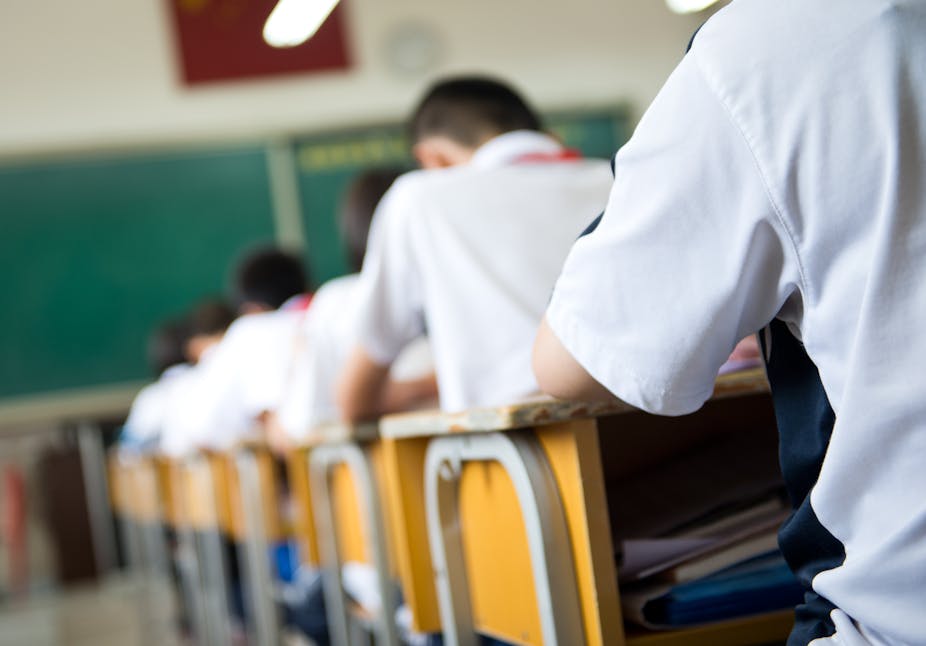The 2012 Program for International Student Assessment (PISA) results out today will no doubt see shock headlines about Australia’s falling education standards and our failing school system.
PISA – which tests a global sample of 15-year olds in maths, science and reading – has been described as the world’s most important test and has a growing influence on educational policy around the globe.
The coordinated international release is now a major media event for education policy makers and governments around the world. In the US, PISAday.org will be live-streaming analysis and policy implications. And the OECD Deputy Director for Education, Andreas Schleicher, will be hosting a worldwide webinar.
According to these latest results, Australia has performed equal 10th in reading, equal 8th in science and equal 17th in mathematics. On each indicator, Australia performs well above the OECD average and is considered to be a “high-quality, high-equity” education system.
Yet, while the media will lament Australia’s slip in the rankings, there is a much more important story to be told around issues of equity and access in Australian education.
High-quality, high-equity
In the next couple of days, we will hear a lot about Australia having a high-quality, high-equity system. However, Australian schooling performance varies across the country, with four states and territories falling outside the high-quality, high-equity category. There are variations of performance both across and within systems.
The idea of Australia being high-equity will mask substantial inequalities, particularly for students from low SES-backgrounds, Indigenous students and those living in remote parts of Australia.
As the latest PISA results show, there is a real difference of the equivalent of about two and a half years of schooling between the performance of students in the top quartile of SES and those in the bottom quartile. This is the case for measures of literacy, numeracy and scientific literacy.
The disparities are similar when comparing the performance on the test between non-Indigenous and Indigenous students.
But having a high-quality and high-equity education system are not mutually exclusive goals. Systems such as Poland, which in the past performed poorly on PISA, have now improved their performance considerably. This was achieved by a policy focus on matters of equity.
This PISA evidence belies the position of the federal Minister for Education, Christopher Pyne, who asserts that Australia does not have an equity issue in education.
Gonski-lite and improving education equity
While the federal government has now apparently recommitted to the first four years of Gonski funding, it is actually the projected funding for the fifth and sixth years that would see the biggest injection into Indigenous and disadvantaged schools.
We know that increased funding makes a difference to the performance of students and schools. However, we know that to make a difference, this funding must be targeted on students with the most educational needs and the schools and systems serving such students.
This was the focus of projected Gonski funding for years five and six; the very funding that the Coalition government has not committed to.
Implications for education policy
PISA is used by governments to see how their education systems “stack up” against others on the reading, science and mathematical skills of 15 year-old school students. More than 15,000 Australian students out of 510,000 students worldwide participated across 65 countries and economic regions.
However, this measure can’t tell us everything about the quality of education systems. It is a simple measure that doesn’t take in the complexities of education. Its newly found prominence comes at a time when we need more nuance in the education debate, not less.
It is important to be mindful that tests such as PISA and NAPLAN, while an important part of the education policy landscape, should not be used as quasi-league tables or to promote “PISA shock” narratives of education-in-crisis.
Despite the Coalition’s apparent lack of concern for rigorous education policy work, particularly evident in the double-back flip over school funding in the past week, equity needs to be at the heart of the policy conversation going forward.
It highlights the need to target money to those students with the biggest needs.
If we are to have our own Sputnik moment in education reform in Australia, then Christopher Pyne and his state and territory counterparts need to drop the three-word-slogans, blame and finger-pointing, and instead work together with education systems, researchers and the community on equitable funding, access and support for all students in our schools.

